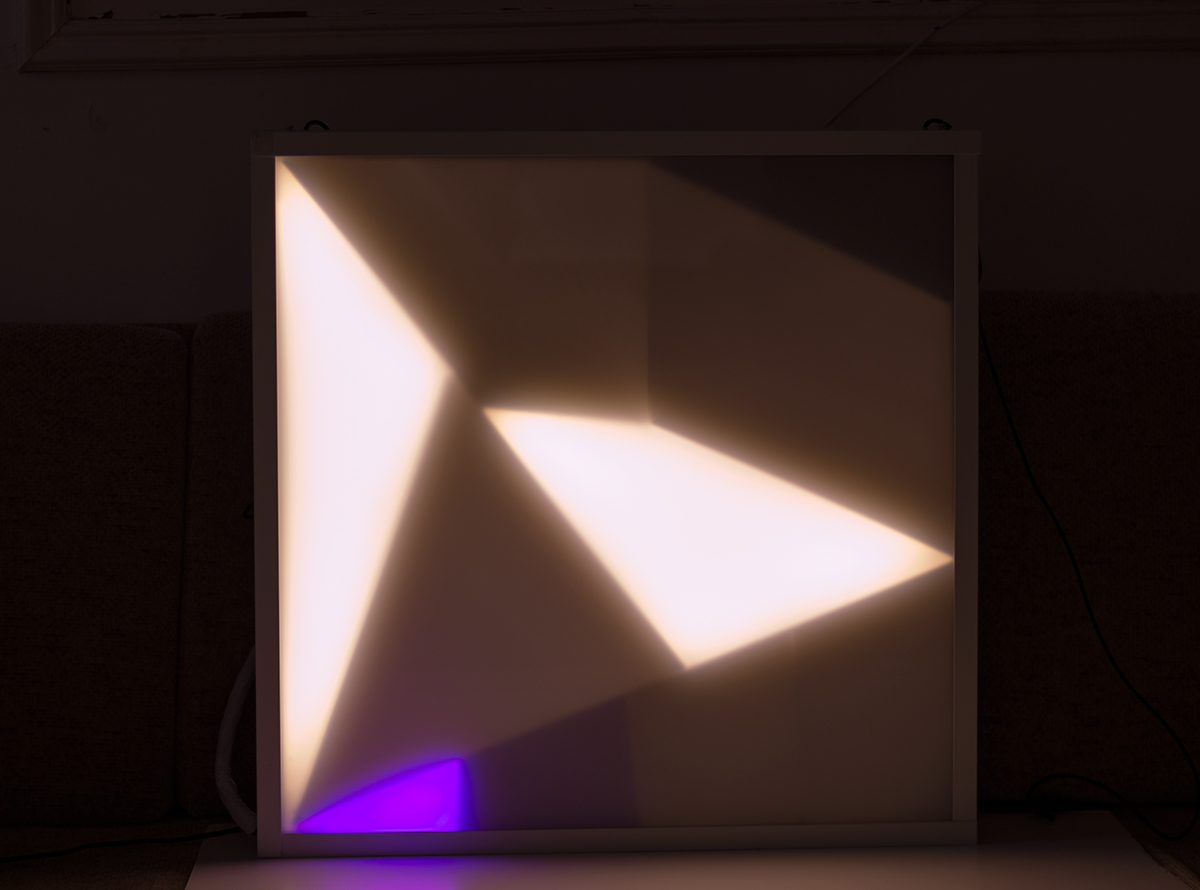
While we’re all used to getting weather reports based on numbers, Lumeteo will give us the weather report by using geometric pattern created by Leds. With time, the mind will get used to reading the visual language of Lumeteo and you will say things like: “it’s bluish triangles today, I’d better wear a sweater”.
It is a poetic way of telling the weather without the use of the complete accuracy of numbers, in a world already hyper digital. Lumeteo gives out 3 basic weather related information: temperature, humidity and barometric pressure. For this it uses 3 different sensors to measure the data from its surroundings. This data is then used to determine the pattern that will appear. The Leds and sensors are controlled by an Arduino board. As the weather varies throughout the day, the week, the year so does the pattern created by the Leds. It is programmed to recognize a range of information and does not designate a particular pattern for each number. For example a certain pattern will appear when temperatures rise above 21°c, but there won’t be a different pattern for each degree. It is the antithesis to a culture where everything needs to be exact. Instead Lumeteo supplies us with an impression only.
Lumeteo frame is 50 cm x 50 cm. The artwork has three components: the luminous object, a box containing the arduino mega and the power supply and an extra box that is situated outside, which contains the sensors.
The colours used to indicate hit or chill are shades of white light with different colour temperatures, while the barometric pressure is indicated with a pink light.
The project was commissioned by the Science museum of Jerusalem in December 2014.


